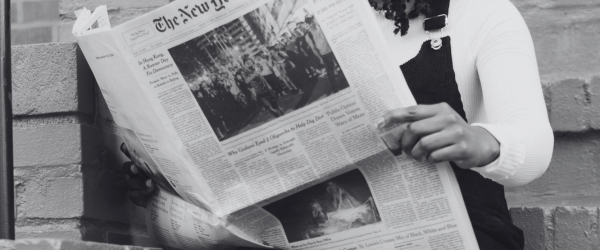INQUIRE: Industry Experts Talk Attention-Grabbing Story Pitches
We asked three prominent arts journalists what catches their eye when sorting through the hundreds of story pitches they receive from arts organizations and publicists in any given week.
MPMG ASKED:
What elements contribute to a story pitch that catches your attention?
Janet Smith (Co-Founder & Editorial Director, Stir Vancouver)
Put the emphasis on “story”: A rich background story that hasn’t been told before will always attract more attention than just pitching a person for their role in a work. We’re looking for human interest or unique routes into art forms that allow us to develop a fuller portrait. Readers don’t just want to know the process behind a piece but to understand the human being behind it. We always look for a tangible thread that we can spin out into a compelling interview full of colourful anecdotes. It’s always better to deal in specifics than generalities. “Tan Dun was inspired to write Buddha’s Passion after a visit to ancient caves in the Gobi Desert” is far more appealing to a journalist than “Tan Dun is a renowned composer.”
Michael Crabb (Freelance Arts Writer, Toronto Star)
It’s always about human connections. People relate to people, not to abstractions. First, establish a respectful professional relationship with the consequential journalists who can reach the audience you’re targeting. Learn what interests them. Understand the pressures and (editorial) constraints they routinely must negotiate. Understand the priorities of the publications they work for.
Second, always forefront the human story, not the concept. The more compelling the human angle, whether it’s an individual or ensemble, the better chance there is to place a story. Dig as much as you can for interesting human aspects about the artists involved that may not be readily available or widely known; the conductor who likes to go for a jog a few hours before a concert; the dancer who calms her nerves by watching funny TikTok videos. The dog who always howls when a pianist owner practices a piece in F sharp major. The art itself will naturally emerge from these quirky stories.
Always remember that a media release and a pitch are very different things. The media release is generic and for broad consumption. It should comprise all the essential information and not be over-hyped. The pitch should be tailored to the individual journalists you work with. One pitch does not fit all.
Aleesha Harris (Arts & Lifestyle Editor, Vancouver Sun & The Province)
For me, a story pitch starts in the subject line. Literally. With most pitches coming in via email, a snappy subject line can make a quick glance at my inbox become an immediate read through. I’m drawn to pitches that lay out the story opportunity simply. Subject lines with clear calls to action such as INTERVIEW OPP: or LOCAL ARTS STORY: in the subject help to grab my attention. In the body of a pitch, I prefer to know, without doing too much searching, exactly what the who/what/where of the story opportunity is. Is there a full press release linked or attached? Is the timing or event date clearly indicated? Who is being offered for the interview? Are there images available to download immediately? These are just a few quick-reference elements that I look for in a pitch.
In terms of prioritization of stories, we focus on local – that is local events, local talent, etc. We also focus on engagement, looking at what previous stories or events have done in terms of reader numbers and traffic. With limited resources, we have to prioritize stories that will resonate with our readers, so that is a main consideration for me when reviewing pitches.


